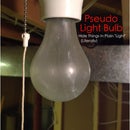Introduction: Give Your Bed Underglow!
In this Instructable, I'll be explaining how to make your bed look awesome with RGB LEDs. The ones I got are remote controlled, they have different options such as fading or flashing, and they are very inexpensive.
Recently there was a sale on banggood.com for a 5 meter long, remote controlled LED strip. It was a great deal, so I bought one. I didn't have any plans in mind for what I should do with it.
Two separate events caused me to come up with Bed Underglow. First, I saw a car drive by at night and it had some sort of lighting underneath, which looked cool. Secondly, I have a clear plastic dragonfly with an RGB LED that slowly fades and changes colour. It is currently beside my bed to help me calm down when I'm in bed. Then the idea came to me; I should line the perimeter of my bed with the LED strip and give my bed "underglow" lighting!
Step 1: Purchase an LED Strip
First you need to measure the perimeter of your bed. I sleep in a single bed, and it is up against a wall, so I only needed enough to cover three sides. This meant that a single 5 meter strip was enough for me. If you sleep in a double, queen, or king, you will obviously need more.
The strip I ordered is a great one, and I bought it here.
It can be cut, so if your bed requires more than five meters, but not exactly ten, you can buy two spools and then trim some off and use the leftover for another project. The spools can be plugged into each other as well. They recommend not plugging in more than two spools into each other because the controller can't supply enough power for more than two.
Once again, the LED strip I used is the least expensive one I could find and you can buy it here.
Step 2: Get a Power Supply
You will need a 12v DC power supply that can deliver at least 2 amps for a single 5m strip, or 4 amps for two 5m strips. I used a power adapter from a speaker, but I also considered using a 12v lead-acid battery. Both will work. The LED strip kit comes with a barrel jack that you can solder to your power supply, but the power adapter I had already had a barrel jack.
Step 3: Line the Perimeter of Your Bed
Now peel off the wax paper to reveal the adhesive, and stick the LED strip around the underside of your bed. The adhesive won't stick well to fabric so you will have to put it on wood or metal. My bed's foundation has a wooden frame, which the strip stuck to easily. To get around corners, bend it like shown in the picture so the strip points out in the direction of the bend. I found that staples helped hold on the strip in the corners, but be sure to gently hammer the staples in manually, if you use a staple gun it can crush the LEDs.
Step 4: Attach the Controller Somewhere
The little white box with two cables coming out is the controller, and it will have to be placed on the bed close to the start of the LED strip. I attached mine to the side of my bed where I have a night table, so it can't be seen. However the infrared receiver is sticking out so it can still get signals from the remote. There are holes in the controller so it can be attached with screws, but I didn't want to permanently ruin any part of my bed so I just used duct tape. And it's camouflage duct tape so you can't really see it...
Step 5: Plug It All In
Connecting everything is simple. Just plug your power adapter into the white box, and connect the LED strip to the white box. There is an arrow on the plug from the white box and an arrow on the plug from the strip. Make sure these line up.
Step 6: Turn on the Lights and Relax!
The Underglow looks amazing in the dark. You can set it to slowly fade between 7 colours when your falling asleep, or set it to a dim white to use as a night light. Or if you're just relaxing in the middle of the day, set it to whatever colour you like. Just looking at the strip directly it will appear to only make red, blue, or green. But when it is shining onto something from a short distance, such as the floor under your bed, the red, green, and blue combine to create any colour you like.
I especially like turning mine to a bright, light blue, because it makes it seem like there's a nuclear reactor under my bed...
Step 7: Bonus: Add Timer
After making this Instructable, I realized it was rather inconvenient having to turn it off before going to bed. Ideally I would have it run as I fall asleep, and then turn off after a certain amount of time. So I decided a quick fix for this problem would be to get a mechanical outlet timer. I looked online and ended up ordering one from the same place I got the LED strip, Banggood.com. The timer I got is nice because you can have as many "on" or "off" times as you want, and each "on" time must be at least 15 minutes. The timer also has a switch to bypass the timer and just turn it on, which is nice if I want it on at a time but don't want that time to be regularly programmed daily. Currently it is programmed to be on for 45 minutes around when I go to bed, so it's on as soon as I enter my room and stays on until shortly after I've fallen asleep. It also comes on at 6:15 and stays on until 6:45. This is because I wake up at 6:30 for school, so it's on when I wake up. It's amazing how much easier it is to wake up early with the calm lighting. It also prevents me fro having to turn on my bright bed side lamp, which is too bright when you have just woken up.
If you want to buy the timer, it can be found here for a low cost.




